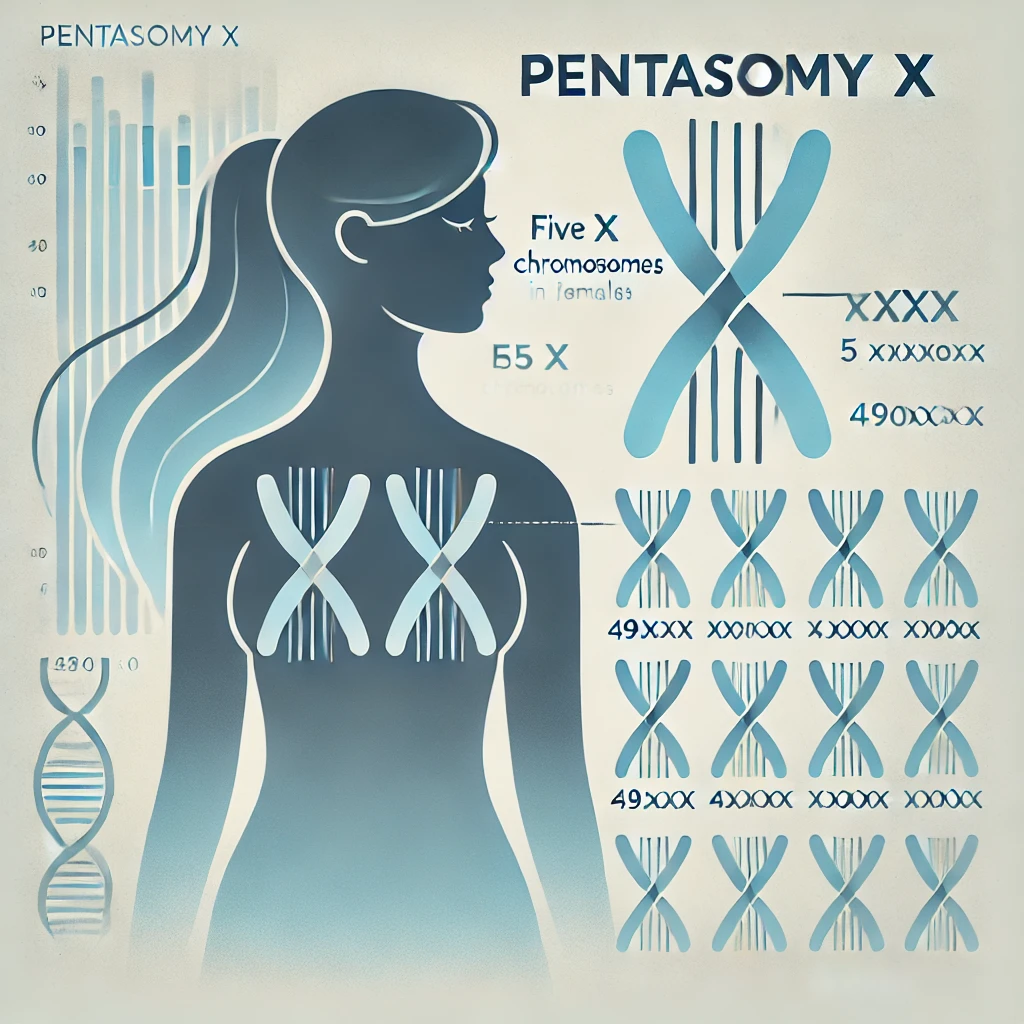What is Pentasomy X Disorder, and Why is it So Rare?
Pentasomy X syndrome, a rare chromosomal disorder, involves the presence of five X chromosomes instead of the usual two in females. As a form of aneuploidy, this genetic variation leads to a range of developmental, physical, and sometimes cognitive symptoms. With fewer than 50 documented cases worldwide, the condition’s rarity makes it a subject of intrigue and extensive study among genetic researchers and healthcare providers.
What Causes Pentasomy X Syndrome?
Pentasomy X syndrome originates from an unusual chromosomal arrangement, where a female (typically 46, XX) possesses an additional three X chromosomes, resulting in a 49,XXXXX karyotype. This chromosomal aneuploidy is thought to occur due to nondisjunction—a failure in chromosome separation during cell division. When this error happens, it produces an abnormal number of chromosomes, which in this case, leads to the five X chromosomes in affected individuals.


How is Pentasomy X Diagnosed?
Given its rarity and broad range of possible symptoms, Pentasomy X is often difficult to diagnose. Some of the primary methods for identifying the disorder include:
- Karyotyping: This genetic test involves examining chromosomes in a sample of cells to identify any chromosomal abnormalities, making it a primary diagnostic tool for aneuploidies like Pentasomy X.
- Prenatal Screening: Chromosomal anomalies like Pentasomy X may also be detected through prenatal testing procedures such as amniocentesis or chorionic villus sampling.
What are the Common Symptoms and Characteristics of Pentasomy X?
Individuals with Pentasomy X exhibit a range of physical, developmental, and sometimes cognitive symptoms, though the severity varies widely. Here are some characteristics often associated with the syndrome:
- Physical Traits: Girls with Pentasomy X may present with distinctive facial features, such as a broad forehead, epicanthal folds, or a flattened nasal bridge. They may also have low muscle tone (hypotonia), short stature, and small hands and feet.
- Developmental Delays: Delayed motor skills, speech and language difficulties, and intellectual disabilities are common, though the degree of impact varies. Many children require early intervention and specialized educational support.
- Health Complications: Some individuals with Pentasomy X may experience congenital heart defects, hearing impairments, and skeletal abnormalities, which require tailored medical care.
Why is Pentasomy X So Rare?
The extreme rarity of Pentasomy X can be attributed to the complexity of chromosomal nondisjunction events leading to multiple extra X chromosomes. Many pregnancies involving high numbers of extra chromosomes may not progress to term, which may partially account for the scarcity of cases. Additionally, due to the variable nature of symptoms, cases of Pentasomy X may go undiagnosed or misdiagnosed as other developmental disorders.
How is Pentasomy X Managed?
Although there is no cure for Pentasomy X, management strategies focus on addressing specific symptoms and developmental needs. These can include:
- Physical and Occupational Therapy: To improve motor skills and physical coordination.
- Speech Therapy: Beneficial for addressing language and communication delays.
- Regular Health Screenings: To monitor for and address any cardiac, auditory, or skeletal complications early on.
What Makes Pentasomy X Unique Among Chromosomal Disorders?
Unlike other aneuploidies involving the X chromosome, such as Turner syndrome (45, X) or Triple X syndrome (47, XXX), Pentasomy X involves multiple additional X chromosomes. This makes the disorder particularly unique, as it lies at the extreme end of the X chromosome aneuploidy spectrum. The rarity of the condition and the variable presentation of symptoms also make Pentasomy X a valuable area of study for understanding how additional X chromosomes influence gene expression and development.
In Conclusion
Pentasomy X remains one of the most intriguing and rare chromosomal conditions, not only because of the unusual genetic configuration but also due to the variable impact on individuals. For those with the condition, early intervention and multidisciplinary support can significantly improve quality of life, though more research is needed to better understand its underlying genetic mechanisms. As researchers continue to study cases and genetic trends, the goal is to develop more targeted approaches for diagnosis and management of this exceptional disorder.










Leave a Reply